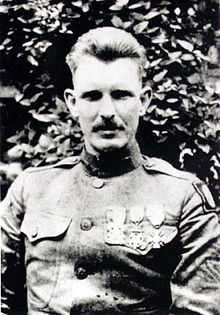What is bandhana or bond?
All transactions result in a relationship between us and the object we are transacting with. This is called bond or bandhana and will result in the formation of an attachment between us and the other entity. Importantly, this entity can be anything, a person, a car, your favourite couch, mug or even food!
How does bandhana or bond get created?
 We respond to stimulus. In fact, when we like the stimulus, we draw the object closer to us, this is called rāga in Sanskrit and when we dislike the object, we push it away. This action of pushing away is known as dveṣa in Sanskrit.
We respond to stimulus. In fact, when we like the stimulus, we draw the object closer to us, this is called rāga in Sanskrit and when we dislike the object, we push it away. This action of pushing away is known as dveṣa in Sanskrit.- Additionally, the movement that comes from drawing closer or pushing away is called karma or action in Sanskrit.
- Importantly, action (karma) also results in an awareness of the situation. This awareness impacts our sense of identity or self-worth, called asmitā.
- This awareness consists of two components. First, the awareness of change in the external environment or dynamics of our transaction with the other person in the bond is called vijñāna.
- This awareness of the external environment and changes in the bond will automatically impact us individually and change our sense of identity (asmitā). This internal awareness of external stimulus and change is called jñāna.
What are the mechanics of a bond (bandhana)
 Firstly, the above stimulus-response transaction results in an experience or anubhava in Sanskrit.
Firstly, the above stimulus-response transaction results in an experience or anubhava in Sanskrit.- Next, the experience and its impact on the sense of identity results in a change to one’s conditioning called svadharma in Sanskrit.
- Also, the change in conditioning is reflected in our behaviour / personality or svabhāva.
- So, it’s important to recognise that our behaviour is a manifestation of personal conditioning or svadharma.
- Obviously, one can see that behaviour and conditioning cannot be separated. Additionally, we must recognise that our behaviour is determined by our conditioning, just as our conditioning determines behaviour.
- In fact, we can see that our behaviour and conditioning in unison and weave with each other, and this weave is called svatantra or individuality in Sanskrit.
- Importantly, transactions are always unequal. We either give or take more, thus generating debt or gathering credit. This is called ṛṇa or debt in Sanskrit.
- As a result, we enter into a relationship with the entity that we are transacting with and this is called bond or bandana in Sanskrit.
What is the impact of the bond (bandana) on our sense of self-esteem?
 Initially, in any bond, we first experience validation of our own existence. We experience confirmation that we are alive and valued.
Initially, in any bond, we first experience validation of our own existence. We experience confirmation that we are alive and valued.- Consequently, we experience relief and happiness that our existence has been affirmed. This happiness is called ānanda.
- Since this existential bonds affects our sense of self-worth (asmitā), we experience existential anxiety that the affirmation might be lost. This fear is called bhaya.
- So, we do everything to retain the bond because loss of those bonds will affect our sense of identity (asmitā).
- Finally, as soon as our existence is confirmed, we begin transacting and incurring karma.
- As a result, there is a continuous creation of bonds, action and debt.
What are the different types of bonds?
Once existence is confirmed, we begin transacting, forming a bond with those we transact with. These transactional bonds can be of 2 types;
-
Equal bond or sambandhana in Sanskrit (sama = equal + bandhana = bond).
Equal bonds exist when give and take occur in equal measure. This generally occurs in a marriage, where give and take is a continuous process and the identity of the couple is subsumed in the bond. This is why marriage in India is called sambandh and in-laws are called sambandi or samdi.
-
Bond of debt or ṛṇānubandhana in Sanskrit (ṛṇanu = that of debt + bandhana = bond)
All bonds other than sambandhana fall into this category. Rinn or ṛṇa occurs when one give or takes more from the other. The debt created has to be liquidated and if it is not completed in this life, it will spill over to the next. This is the basis for logic of the cycle of rebirth (saṃsāra).
How does awareness of action (prajñā) operate in any bond?
The dissolution of debt involves 3 terms,
- Often, all the debt is not liquidated in a single transaction. Consequently, this results in a debt balance. Therefore, the overall debt balance of an individual is called sañcita-karma (accumulated karma in Sanskrit)
- The debt coming up for liquidation is called prārabda-karma (karma that has come up for reconciliation).
- Next, the debt which is being created NOW, is āgāmi-karma or (current karma in Sanskrit)
Conclusion: Ṛṇānubandhana or bond of debt is transactional in nature. Whenever we transact with any object, an existential bond is first established. In this bond, there is only the dual experience of happiness (anandam) or fear of loss of identity (bhaya).
This is followed by a transaction which results in an experience of like or dislike with the object, leading to action or karma with the outcome of ṛṇānubandhana or bond of debt.
Obviously, the quantum of debt changes when we are aware of ourselves in the sutuation and make conscious attempts to reduce our debts by altering our actions (karma). Therefore, the quantum of debt which we incur is dependent on our awareness (prajñā) in the situation.
Anecdotes, experiences and situations to help understand bond…

(Wikipedia extract) Alvin Cullum York was a United States soldier, a famous World War 1 hero. He was awarded the Medal of Honour for leading an attack on a German machine gun nest, taking 32 machine guns, killing 28 German soldiers and capturing 132 others.
York belonged to a Christian denomination, the Church of Christ in Christian Union which discouraged warfare and violence.
When York was drafted into the army for World War I, he tried to avoid induction as a conscientious objector due to his religious beliefs. However, his status as a conscientious objector was rejected.
However, York still wanted nothing to do with the army and killing. A sympathetic commanding officer lectured York and gave him leave to go home and reflect his position. Finally, York thought about it and decided to serve his country.
His unit was shipped out to Europe and participated in an attack. Suddenly, pinned down by German fire and seeing his friends being shot down all around him, York suddenly found himself placed in charge. Finally, he worked his way around behind German lines and shot with such deadly effect that the Germans surrendered. York later explained that he did what he did to hasten the end of the war and minimize the killing.
Here is an example of a person whose dharma was non-violence. Yet, he went to war, performed valorous deeds because he believed that would end the war quickly.
Analyse the following of Alvin York’s bonds:
- How did York’s conditioning (dharma) impact his view of the world?
- What was the impact of his self-identity (asmitā), the weave of his conditioning and behaviour on his actions?
- How did his sense of identity change as his evolution occurred from confusion to clarity?
- What was the impact of the above change on his bond to his country?
- Have you had a similar identity and conditioning conflicts? How did you resolve it?
Points to Ponder on bond.
Internal Tags: Conditioning or Dharma, Self Awareness or Asmita, Guna in Bhagawat Gita (chapter 14)
External Tags: Sentience
- What is a bond? How does it occur?
- How is a bond formed, sustained and dissolved?
- Is a bond possible between animate and inanimate objects? For example, how can one define a bond between a car and a person?
- What is prārabdha-karma and how does it affect us?
- If prārabdha-karma exists, the how much of our decision making is actually done by us?
- What happens to a bond in a stress situation?
- How does guṇa affect decision making?
- What are the changes which occur in our guṇa during a stress situation?
- How does free-will affect us and our behaviour?
- What happens to a bond in a stress situation?
- Why is our sense of Self so important? How does it affect decision-making?


